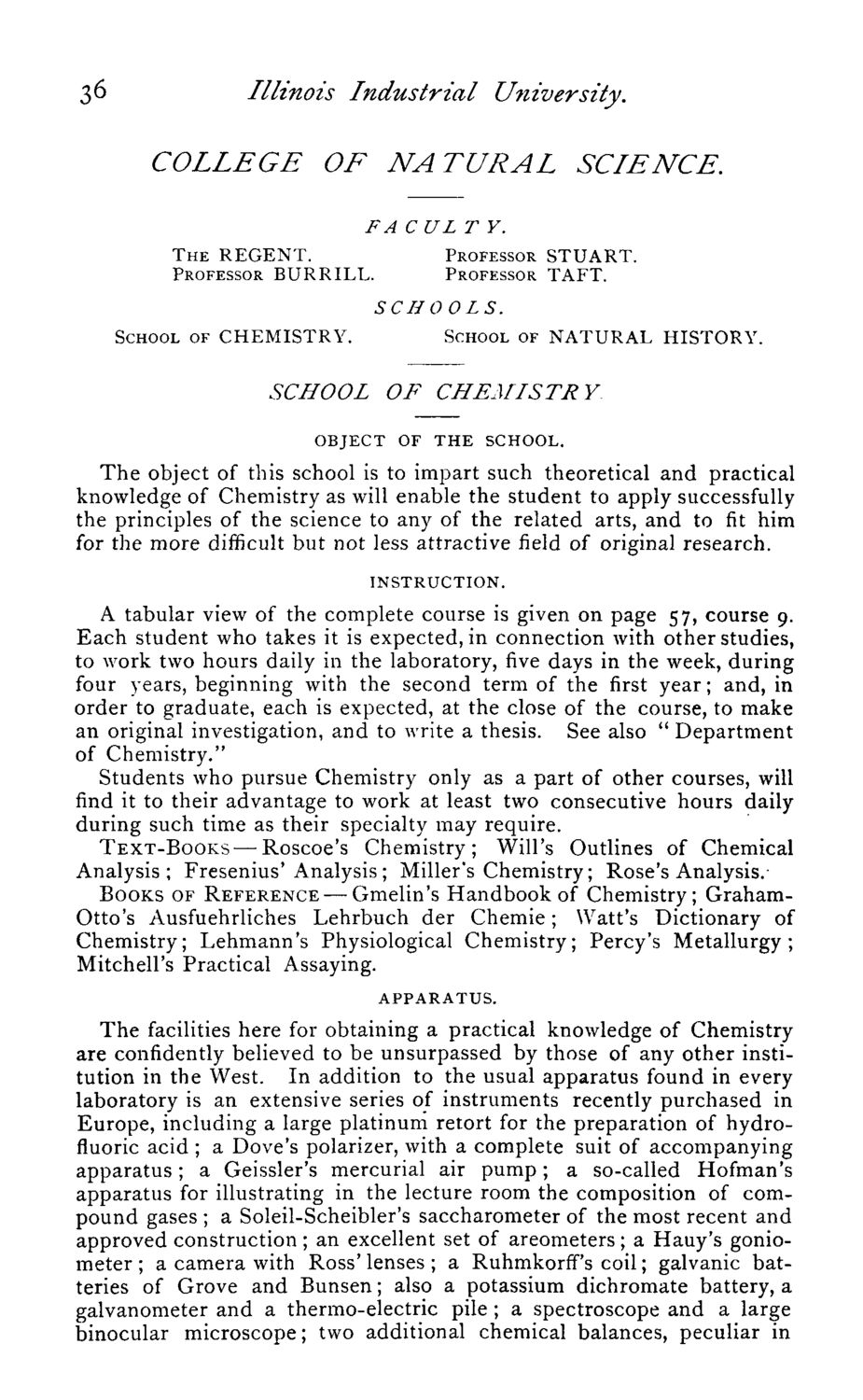Caption: Course Catalog - 1873-1874
This is a reduced-resolution page image for fast online browsing.

EXTRACTED TEXT FROM PAGE:
36 Illinois Industrial COLLEGE University. SCIENCE. OF NATURAL FA C ULT Y. THE REGENT. PROFESSOR BURRILL. PROFESSOR STUART. PROFESSOR TAFT. SCHOOLS. SCHOOL OF CHEMISTRY. SCHOOL OF NATURAL HISTORY. SCHOOL OF CHEMISTRY OBJECT OF THE SCHOOL. The object of this school is to impart such theoretical and practical knowledge of Chemistry as will enable the student to apply successfully the principles of the science to any of the related arts, and tofithim for the more difficult but not less attractive field of original research. INSTRUCTION. A tabular view of the complete course is given on page 57, course 9. Each student who takes it is expected, in connection with other studies, to work two hours daily in the laboratory, five days in the week, during four years, beginning with the second term of the first year; and, in order to graduate, each is expected, at the close of the course, to make an original investigation, and to write a thesis. See also " Department of Chemistry." Students who pursue Chemistry only as a part of other courses, will find it to their advantage to work at least two consecutive hours daily during such time as their specialty may require. TEXT-BOOKS—Roscoe's Chemistry; Will's Outlines of Chemical Analysis; Fresenius'Analysis ; Miller's Chemistry; Rose's Analysis. BOOKS OF REFERENCE — Gmelin's Handbook of Chemistry; GrahamOtto's Ausfuehrlicb.es Lehrbuch der Chemie; Watt's Dictionary of Chemistry; Lehmann's Physiological Chemistry; Percy's Metallurgy; Mitchell's Practical Assaying. APPARATUS. The facilities here for obtaining a practical knowledge of Chemistry are confidently believed to be unsurpassed by those of any other institution in the West. In addition to the usual apparatus found in every laboratory is an extensive series of instruments recently purchased in Europe, including a large platinum retort for the preparation of hydrofluoric acid ; a Dove's polarizer, with a complete suit of accompanying apparatus; a Geissler's mercurial air pump; a so-called Hofman's apparatus for illustrating in the lecture room the composition of compound gases ; a Soleil-Scheibler's saccharometer of the most recent and approved construction; an excellent set of areometers; a Hauy's goniometer ; a camera with Ross' lenses ; a Ruhmkorff's coil; galvanic batteries of Grove and Bunsen; also a potassium dichromate battery, a galvanometer and a thermo-electric pile; a spectroscope and a large binocular microscope; two additional chemical balances, peculiar in
|